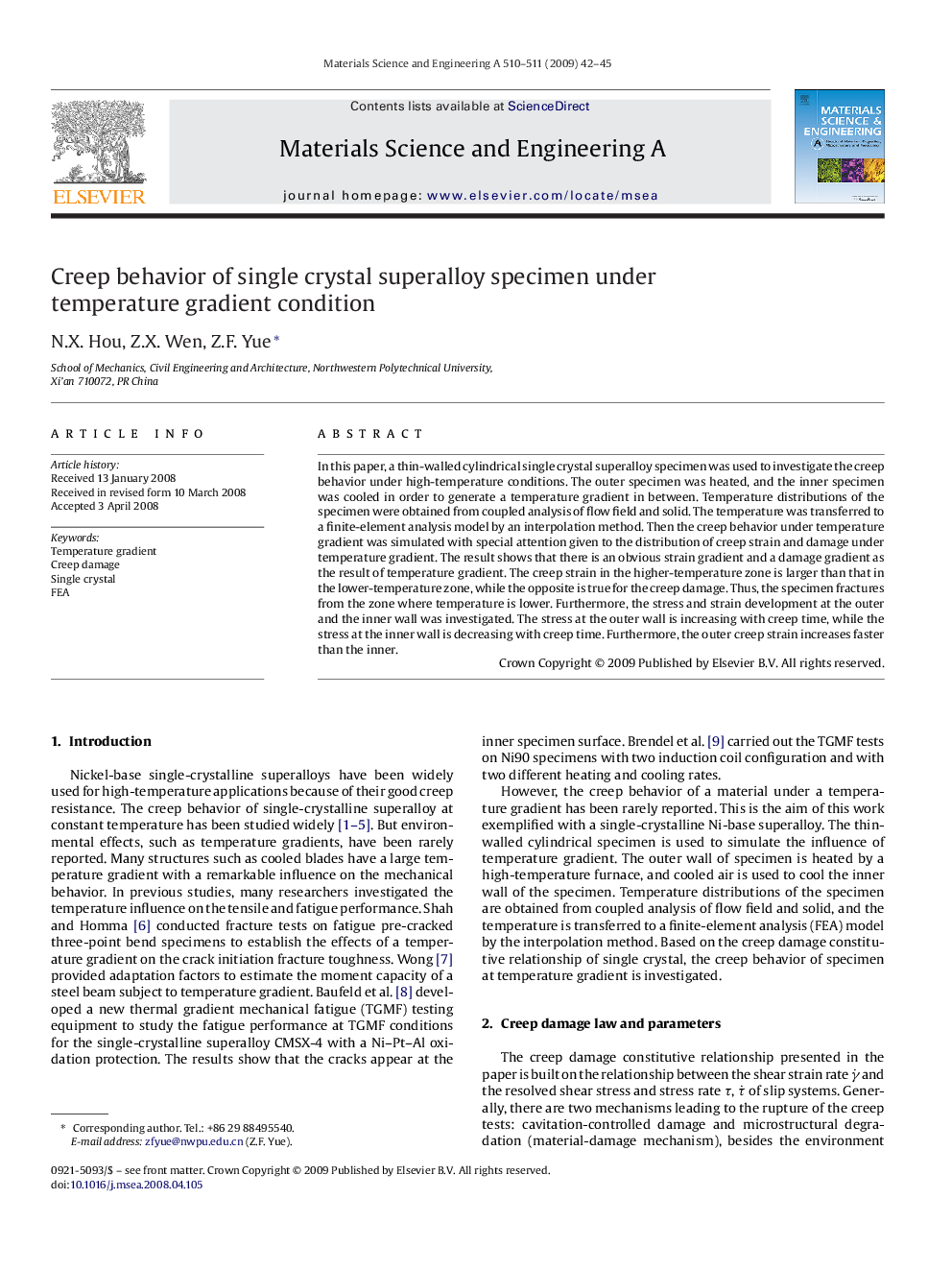| Article ID | Journal | Published Year | Pages | File Type |
|---|---|---|---|---|
| 1580731 | Materials Science and Engineering: A | 2009 | 4 Pages |
In this paper, a thin-walled cylindrical single crystal superalloy specimen was used to investigate the creep behavior under high-temperature conditions. The outer specimen was heated, and the inner specimen was cooled in order to generate a temperature gradient in between. Temperature distributions of the specimen were obtained from coupled analysis of flow field and solid. The temperature was transferred to a finite-element analysis model by an interpolation method. Then the creep behavior under temperature gradient was simulated with special attention given to the distribution of creep strain and damage under temperature gradient. The result shows that there is an obvious strain gradient and a damage gradient as the result of temperature gradient. The creep strain in the higher-temperature zone is larger than that in the lower-temperature zone, while the opposite is true for the creep damage. Thus, the specimen fractures from the zone where temperature is lower. Furthermore, the stress and strain development at the outer and the inner wall was investigated. The stress at the outer wall is increasing with creep time, while the stress at the inner wall is decreasing with creep time. Furthermore, the outer creep strain increases faster than the inner.
